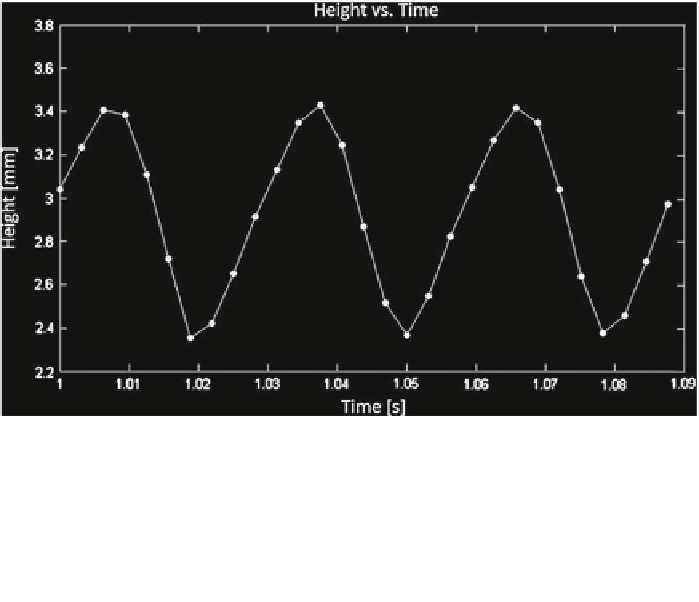Environmental Engineering Reference
In-Depth Information
Fig. 6
Height as a function of time for a drop of 60
µ
l subject to a frequency of 34Hz
Fig. 7
Images of the side view at different instants for a 60
µ
l drop subject to a frequency of 48Hz,
taken at a camera speed of 3,200 frames per second
However, if the height of the highest peak in each image is measured as a function
of time, an almost periodic signal is obtained. Figure
8
shows a signal with a main
period of about 0.21s. The non sinusoidal form of the wave corresponds to the
nonlinear behavior of the drop.
The chaotic phase is metastable. The drop can be easily broken with a small
perturbation, attaining an atomization stage. First, large oscillating fingers appear
and small droplets are ejected from the core as is shown in Fig.
9
.
For 60
l the atomization phase is present at 56Hz. The break up of the drop
happens in two different ways:
µ
The energy is large enough so that the liquid in the fingers overcomes surface
tension and separates. These small droplets start oscillating harmonically.
The fingers collide and form a jet that breaks up, due to gravity, into droplets. The
droplets oscillate in the harmonic phase.


Search WWH ::

Custom Search